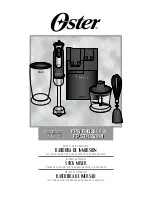
9
POWER
Please
do
not
connect
microphones
to
the
mixer
(
or
the
stagebox
/
wallbox
)
as
long
as
the
phantom
power
supply
in
switched
on
.
Connect
the
micro
-
Phones
before
you
switch
on
the
power
supply
.
IN
addition
,
the
monitor
/
PA
loudspeakers
should
be
muted
before
you
activate
the
phantom
power
supply
.
After
switching
on
,
wait
approx
.
one
minute
in
order
to
allow
system
stabilization
.
The
blue
POWER
LED
indicates
that
the
console
in
powered
on
.
LEVEL
INDICATOR
The
high
-
precision
4
-
segment
display
accurately
displays
the
relevant
signal
level
.
2
.
4
Main
section
The
red
+
48
V
LED
lights
up
when
phantom
power
is
turned
on
.
Phantom
power
is
required
to
operate
condenser
microphones
and
is
activates
using
the
+
48
V
switch
located
above
the
+
48
V
LED
.
+
48
V
TAPE
TO
MIX
TAPE
TO
CTRL
FX
TO
CTRL
+
48
V
POWER
0
-
+
15
8
L
R
20
0
6
CLIP
MAIN
MIX
10
0
10
15
20
25
30
40
60
8
PHANTOM
Fig
.
2
.
4
:
Control
elements
of
the
main
section
Caution
!
You
must
never
use
unbalanced
XLR
connectors
(
PIN
1
to
3
connected
)
on
the
MIC
input
connectors
if
you
want
to
use
the
phantom
power
supply
.
10
When
the
TAPE
TO
MIX
switch
is
depressed
,
the
2
-
track
input
is
assigned
to
the
main
mix
providing
an
additional
input
for
tape
machines
,
MIDI
instruments
or
other
signal
sources
that
do
not
require
any
processing
.
CD
/
TAPE
TO
MIX
Press
the
CD
/
TAPE
TO
CTRL
ROOM
/
PHONES
switch
if
you
want
to
monitor
the
2
-
track
input
via
the
CTRL
ROOM
OUT
.
This
provides
an
easy
way
to
monitor
signals
coming
back
from
tape
to
ensure
that
they
are
recording
correctly
.
CD
/
TAPE
TO
CTRL
If
you
are
recording
a
signal
via
the
CD
/
TAPE
OUTPUT
and
wish
to
listen
to
this
simultaneously
via
the
CD
/
TAPE
INPUT
,
do
not
use
the
CD
/
TAPE
TO
MIX
switch
.
Doing
this
would
create
a
feedback
loop
,
since
the
signal
would
be
routed
,
via
the
main
mix
,
back
to
tape
via
the
CD
/
TAPE
OUTPUT
.
To
monitor
the
CD
/
TAPE
INPUT
,
use
the
CD
/
TAPE
TO
CTRL
ROOM
switch
to
assign
the
tape
signal
to
the
monitor
(
s
)
or
headphones
.
This
will
avoid
the
tape
signal
being
routed
to
the
CD
/
TAPE
OUTPUT
.
FX
TO
CTRL
If
you
want
to
monitor
only
the
FX
send
signal
in
your
headphones
or
monitor
speaker
(
s
),
press
the
FX
TO
CTRL
switch
.
Now
the
signal
of
the
effects
processor
can
be
monitored
alone
,
and
the
main
mix
and
/
or
CD
/
tape
signal
is
no
longer
present
on
the
phone
and
control
room
outputs
.
LEVEL
SETTING
To
correctly
set
the
gains
of
the
channels
,
first
set
the
LEVEL
controls
of
the
input
channels
to
their
center
positions
(
0
dB
)
Then
use
the
TRIM
controls
to
increase
the
input
amplification
until
signal
peaks
show
0
dB
on
the
level
meter
.
When
recording
to
digital
recorders
,
the
recorder
s
peak
meter
should
not
go
into
overload
.
While
analog
recorders
can
be
overloaded
to
some
extent
,
creating
only
a
certain
amount
of
distortion
(
which
is
common
and
often
desirable
),
digital
recorders
distort
quickly
when
overloaded
.
In
addition
,
digital
distortion
is
not
only
undesirable
,
but
also
renders
your
recording
completely
useless
.
The
peak
meters
of
your
ME
display
the
level
virtually
independent
of
frequency
.
A
recording
level
of
0
dB
is
recommended
for
all
signal
types
.
When
recording
to
an
analog
device
.
the
VU
meters
of
the
recording
machine
should
reach
approx
. +
3
dB
with
low
-
frequency
signals
(
e
.
g
.
kick
drum
).
Due
to
their
inertia
VU
meters
tend
to
display
too
low
a
signal
level
at
frequencies
above
1
kHz
.
This
is
why
,
for
example
,
a
Hi
-
Hat
should
only
be
driven
as
far
as
-
10
dB
.
Since
drums
should
be
driven
to
approx
0
dB
.
MAIN
MIX
Use
the
MAIN
MIX
fader
to
adjust
the
volume
of
the
main
out
.
PHONE
/
CONTROL
ROOM
Use
the
PHONE
/
CONTROL
ROOM
control
to
adjust
the
signal
level
of
the
CONTROL
ROOM
and
PHONES
outputs
.
Summary of Contents for studiomix 10
Page 1: ...USER S MANUAL...






























